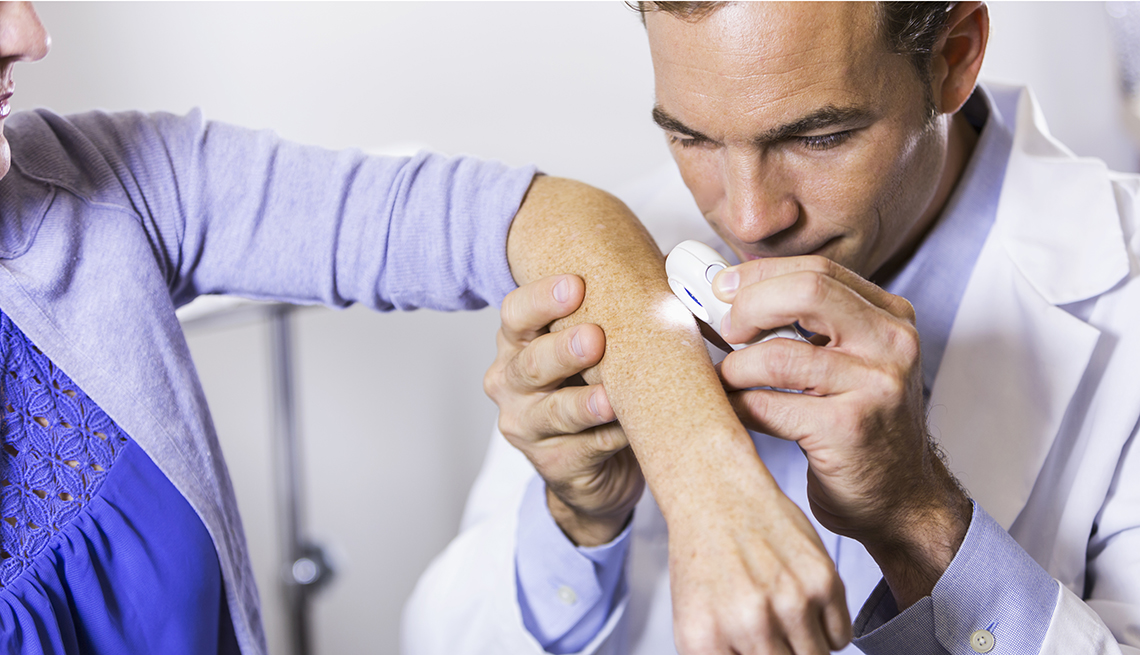
Should you get that mole removed?
- Select a language for the TTS:
- UK English Female
- UK English Male
- US English Female
- US English Male
- Australian Female
- Australian Male
- Language selected: (auto detect) - EN
Play all audios:

SHOULD YOU REMOVE YOUR MOLE? Don’t try to figure out a mole’s threat level on your own. Visit a dermatologist, who has the training to distinguish a harmless growth from a cancerous one.
Your doctor will start by asking about your history of moles and sun exposure to gauge how you make moles, Reid says. Then the doctor will look deeply into the mole in question, examining
its pigment cells and network of blood vessels using a handheld magnifying tool called a dermatoscope. Any spot deemed suspicious will be biopsied, which involves removing part or all of the
mole for testing. HOW DOCTORS REMOVE MOLES The biopsy technique used depends on the size and location of the mole, as well as on how suspicious it looks. Darland says she removes most moles
with a shave biopsy. “We numb up the skin, and we use a blade to shave off the top layer of skin,” she says. “You’re left with a little open sore that heals from the bottom up. Most often,
it’s a really quick and easy procedure that doesn’t require any stitches or downtime.” A less common alternative is the punch biopsy, which uses a cookie-cutter-like tool to punch down into
the deeper layers of skin. Afterward you will need a stitch or two to close the wound. Very large moles are removed with a scalpel in a football-shaped pattern, which the doctor then sews up
to create a straight scar. The sample goes off to a lab, where a pathologist examines it under a microscope. Mildly atypical moles typically don’t need any more attention. For a moderately
to severely atypical mole that’s closer to the “melanoma neighborhood,” you may need to return to your doctor’s office to have the rest of it removed, Vashi says. Some moles clearly look
suspicious and need to be biopsied. Others fall into a gray area. This is where your dermatologist’s skill comes in handy, Reid says. If you’re reluctant to undergo a procedure for a mole
that is likely harmless, your dermatologist can take measurements and photos and then check it again in a few months. In that time, if the mole hasn’t grown, “that’s generally a reassuring
finding,” Reid says. WILL MY INSURANCE COVER MOLE REMOVAL? Insurance coverage can vary based on the type of plan you have. If a mole looks suspicious enough for your dermatologist to suggest
removing it, most plans will cover it. Also typically covered are moles that cause problems — for example, ones that are painful or that block your vision. If, on the other hand, you want
to remove a mole simply because you don’t like the way it looks, your insurance company will likely consider the procedure cosmetic and make you pay for it yourself.
